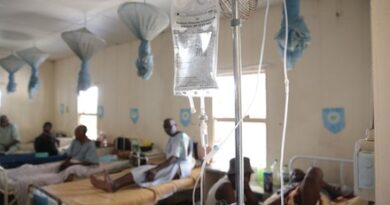Malaria spraying and net distribution programme rolled out
ZIMBABWE continues to battle malaria, a disease that remains one of the country’s leading public health threats despite notable progress in reducing both cases and deaths.
According to the Weekly Disease Surveillance Report for the week ending September 14 2025, the country recorded 1 386 malaria cases and one death.
Cumulatively, Zimbabwe has registered 139 925 malaria cases and 376 deaths so far this year.
Mashonaland Central and Mashonaland East remain the most affected provinces, with children under five accounting for above 15 % of cases.
While the statistics highlight the scale of the challenge, testimonies from communities in Chipinge show how government interventions are making a difference.
“In terms of malaria control in this area, the health practitioners have been coming with sprays and nets, and this has kept malaria at bay, but we are appealing to the government to conduct the sprays at least twice a year,” Tanganda resident, Mrs Memory Sithole said.
“We have a lot of mosquitoes in this area, but the spraying has really helped because when it starts to rain, the mosquitoes will be a little, so we really appreciate the mosquito nets and the spraying,” Marwendo villager, Mrs Bessi Tendwa said.
“Before the spraying, people were dying from malaria, but now we rarely have any fatalities,” Marwendo villager, Ms Joyce Muchandibaya said.
As the rainy season approaches, Chipinge District Medical Officer Dr Ozimmo Matekenye said the notable reduction in malaria cases is a direct result of intensified interventions, adding that efforts are already underway to further curb infections in the coming months.
“Chipinge District is a vast district. It is a district with all sorts of diseases. Our interventions start from prevention, health promotions, curative services, and rehabilitation. Chipinge District has five regions, from Region 1 to Region 5. Thus, we have diseases of different natures pertaining to each region. Of particular interest, we have malaria, which is endemic in wards 26, 27 and 29 in Chipinge District. But the incidence of malaria cases is declining due to interventions that are being done in the community. We have great awareness that is being done in collaboration with other ministries and other stakeholders.
“This previous year, in terms of malaria, we had a drop. We attribute that to the success of our indoor residual spraying program, IRS, where we had 89% coverage. We also distributed a mass distribution of nets or insecticide-treated nets. Currently, our district environmental health officer is doing that. So we have good news in terms of malaria. Over the years, we had 20 plus malaria deaths in a year. But over the past two years, we have had fewer than 10 deaths. At the current rate, we have had six deaths in the district,” Dr Matekenye said.
As Zimbabwe heads into the Malaria season, the government is stepping up efforts through stronger surveillance, wider preventive coverage and intensified health education.
With cases and deaths already showing a steady decline, the progress made offers hope that, through continued vigilance at both household and national levels, the vision of a malaria-free Zimbabwe is within reach. ZBC




